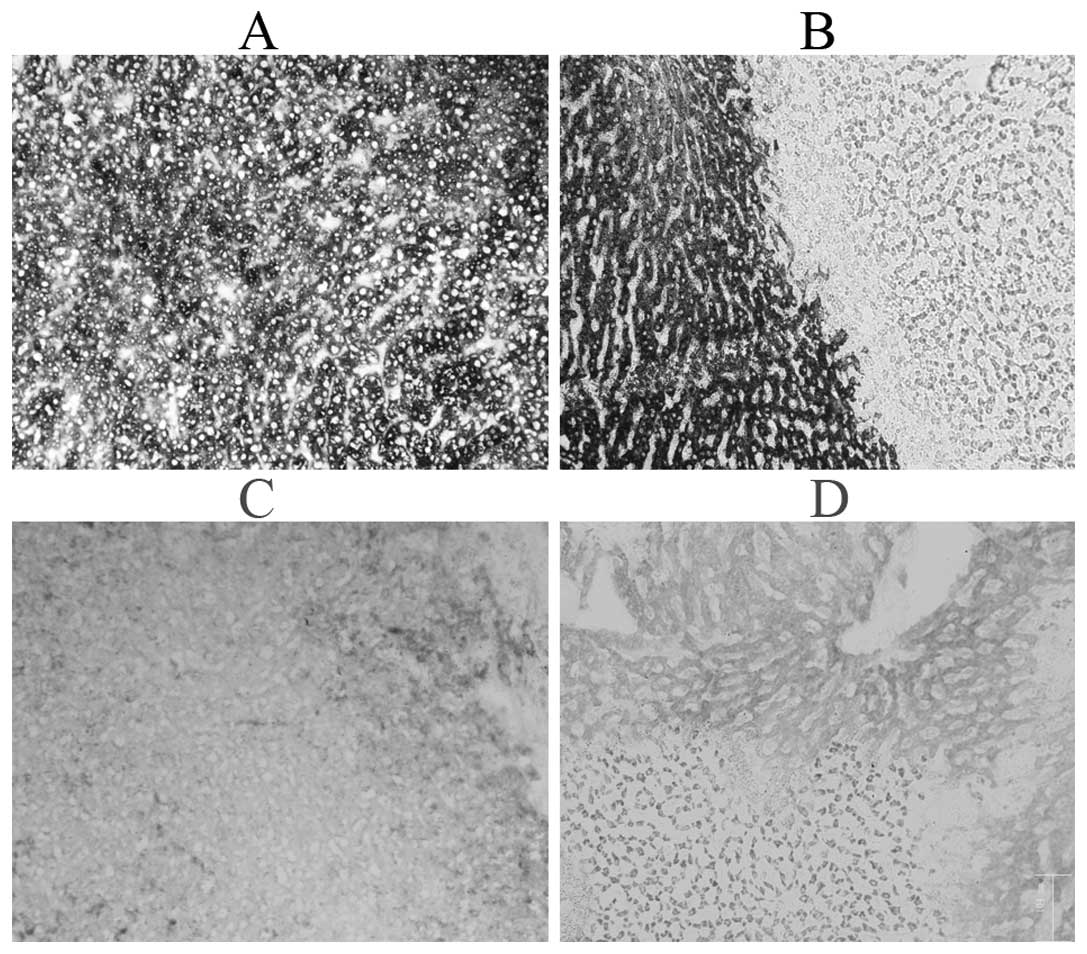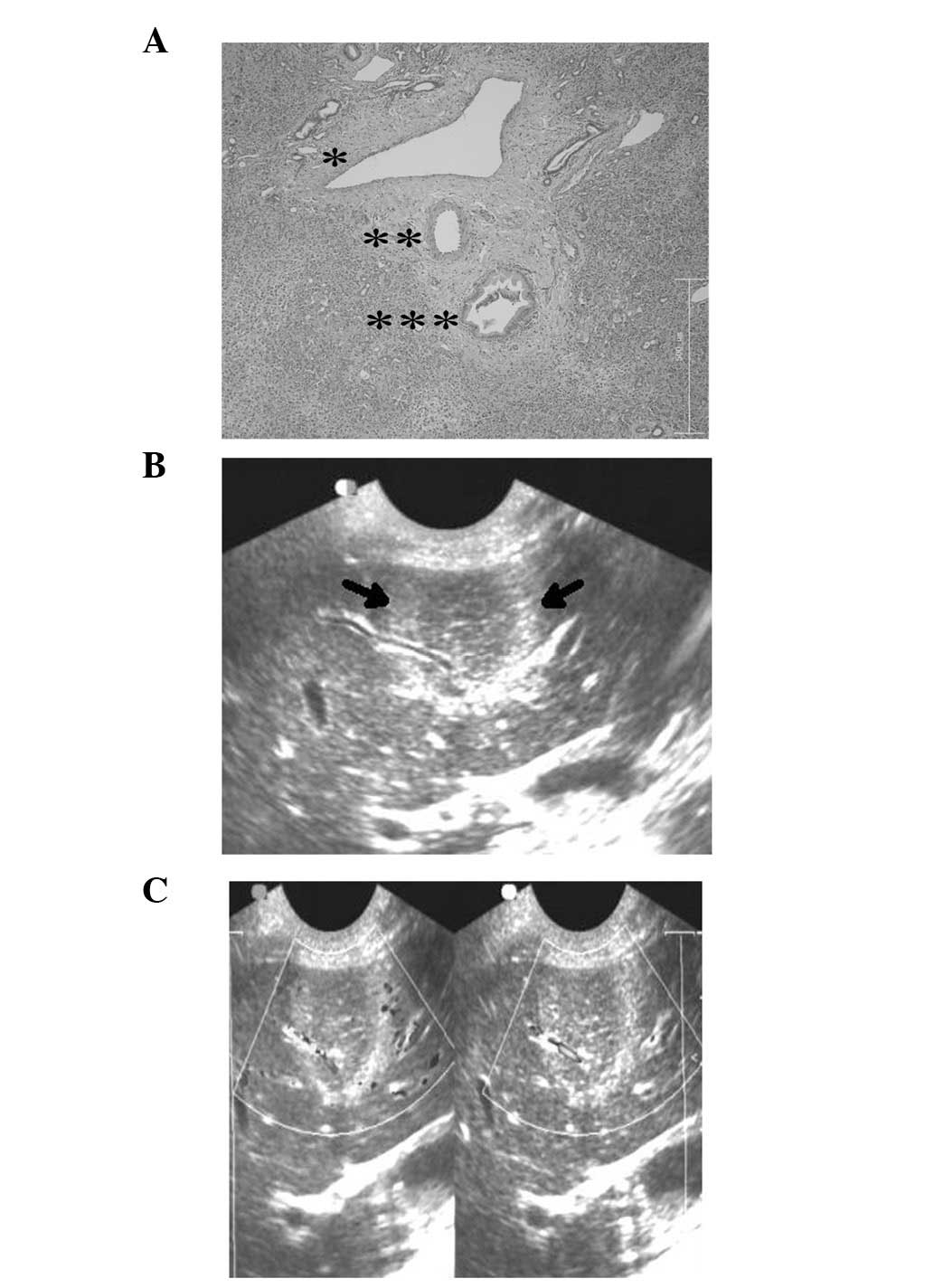Percutaneous ultrasound-guided irreversible electroporation: A goat liver study
- Authors:
- Ying Liu
- Zhengai Xiong
- Wei Zhou
- Yuanyuan Hua
- Chengxiang Li
- Chenguo Yao
-
View Affiliations
Affiliations: Department of Obstetrics and Gynecology, First Affiliated Hospital of Chongqing Medical University, Chongqing 40016, P.R. China, Department of Obstetrics and Gynecology, Second Affiliated Hospital of Chongqing Medical University, Chongqing 40010, P.R. China , State Key Laboratory of Power Transmission Equipment and System Security and New Technology, Chongqing University, Chongqing 400044, P.R. China
- Published online on: June 29, 2012 https://doi.org/10.3892/ol.2012.781
-
Pages:
450-454
Metrics:
Total
Views: 0 (Spandidos Publications: | PMC Statistics:
)
Metrics:
Total PDF Downloads: 0 (Spandidos Publications: | PMC Statistics:
)
This article is mentioned in:
Abstract
Irreversible electroporation (IRE) is a new tumor ablation technique. Pulsed electric fields (PEFs) with permanent duration (100 µsec) permanently permeabilize the cell membrane, causing the formation of innumerable permanent nanopores in the cell membrane and leading to cell death. In this study, percutaneous IRE was performed on 24 goat livers under the guidance of ultrasonography (US). IRE-exposed tissues were pathologically examined and glucose-6-phosphatase (G-6-P) and succinodehydrogenase (SDH) staining were used to detect the activity and function of the endoplasmic reticulum and mitochondria of liver tissues at 0 and 24 h after IRE ablation. Tissue ablation responses were monitored in real-time with US in the percutaneous IRE group; the largest diameter of the ablation zones was measured immediately (D1) and after 24 h (D2). Following D2 measurement, the animals were sacrificed and the gross sections (D3) were measured. The pathological examination results showed complete tissue necrosis after 24 h instead of immediately following IRE. The largest long diameters measured by intraprocedural US immediately after IRE (D1, 39.58±2.13 mm) were larger than those measured by US after 24 h (D2, 37.07±3.51 mm) and in gross section measurements (D3, 36.44±2.04 mm; P<0.05). D1 showed a good linear correlation with D3 (r=0.949). We conclude from these studies that IRE is not an acute ablating effect which leads to cell death. If US-guided percutaneous IRE focused on the target liver areas accurately, physicians would be able to assess the extent of necrosis through the regression equation during the IRE ablation procedure, and evaluate whether sufficient electric field energy had been applied to the desired tissue. Assisted with US guiding and monitoring, the minimally invasive IRE procedure in intraperitoneal lesions may become an important tumor ablation technique.
View References
|
1
|
Rubinsky B: Irreversible electroporation
in medicine. Technol Cancer Res Treat. 6:255–260. 2007. View Article : Google Scholar
|
|
2
|
Davalos RV, Mir IL and Rubinsky B: Tissue
ablation with irreversible electroporation. Ann Biomed Eng.
33:223–231. 2005. View Article : Google Scholar : PubMed/NCBI
|
|
3
|
Weaver JC: Electroporation: A dramatic,
nonthermal electric field phenomenon. Proceedings of the First
World Congress for Electricity and Magnetism in Biology and
Medicine. Academic Press; Lake Buena Vista, Florida: 1992
|
|
4
|
Weaver JC and Chizmadzhev YA: Theory of
electroporation: a review. Bioelectrochem Bioenerg. 41:135–160.
1996. View Article : Google Scholar
|
|
5
|
Weaver JC: Electroporation of cells and
tissues. IEEE Trans Plasma Sci IEEE Plasma Sci Soc. 28:24–33. 2000.
View Article : Google Scholar
|
|
6
|
Neumann E and Rosenheck K: Permeability
changes induced by electric impulses in vesicular membranes. J
Membr Biol. 10:279–290. 1972. View Article : Google Scholar : PubMed/NCBI
|
|
7
|
Crowley JM: Electrical breakdown of
biomolecular lipid membranes as an electromechanical instability.
Biophys J. 13:711–724. 1973. View Article : Google Scholar : PubMed/NCBI
|
|
8
|
Mir LM: Nucleic acids
electrotransfer-based gene therapy (electrogenetherapy): Past,
current and future. Mol Biotechnol. 43:167–176. 2009. View Article : Google Scholar : PubMed/NCBI
|
|
9
|
Neumann E, Schaefer-Ridder M and Wang Y:
Gene transfer into mouse lyoma cells by electroporation in high
electric fields. EMBO J. 1:841–845. 1982.PubMed/NCBI
|
|
10
|
Sersa G, Miklavcic D, Cemazar M, Rudolf Z,
Pucihar G and Snoj M: Electrochemotherapy in treatment of tumours.
Eur J Surg Oncol. 34:232–240. 2008. View Article : Google Scholar
|
|
11
|
Lee EW, Chen C, Prieto VE, Dry SM, Loh CT
and Kee ST: Advanced hepatic ablation technique for creating
complete cell death: irreversible electroporation. Radiology.
255:426–433. 2010. View Article : Google Scholar : PubMed/NCBI
|
|
12
|
Daniels C and Rubinsky B: Electrical field
and temperature model of nonthermal irreversible electroporation in
heterogeneous tissues. J Biomech Eng. 131:0710062009. View Article : Google Scholar : PubMed/NCBI
|
|
13
|
Maor E, Ivorra A and Rubinsky B: Non
thermal irreversible electroporation: novel technology for vascular
smooth muscle cells ablation. PLoS One. 4:e47572009. View Article : Google Scholar : PubMed/NCBI
|
|
14
|
Rubinsky B, Onik G and Mikus P:
Irreversible electroporation: a new ablation modality - clinical
implications. Technol Cancer Res Treat. 6:37–48. 2007. View Article : Google Scholar : PubMed/NCBI
|
|
15
|
Maor E, Ivorra A, Leor J and Rubinsky B:
The effect of irreversible electroporation on blood vessels.
Technol Cancer Res Treat. 6:307–312. 2007. View Article : Google Scholar : PubMed/NCBI
|
|
16
|
Lee EW, Loh CT and Kee ST: Imaging guided
percutaneous irreversible electroporation: ultrasound and
immunohistological correlation. Technol Cancer Res Treat.
6:287–294. 2007. View Article : Google Scholar : PubMed/NCBI
|













